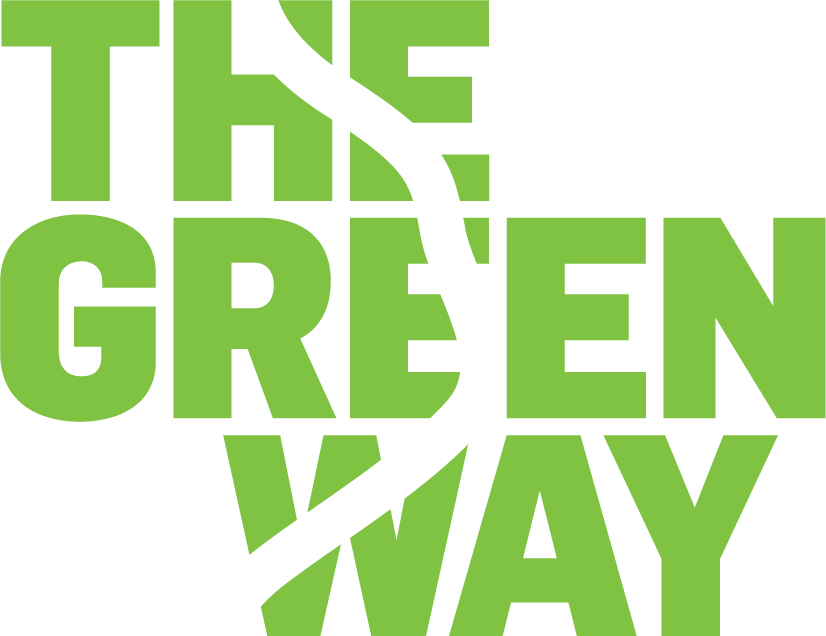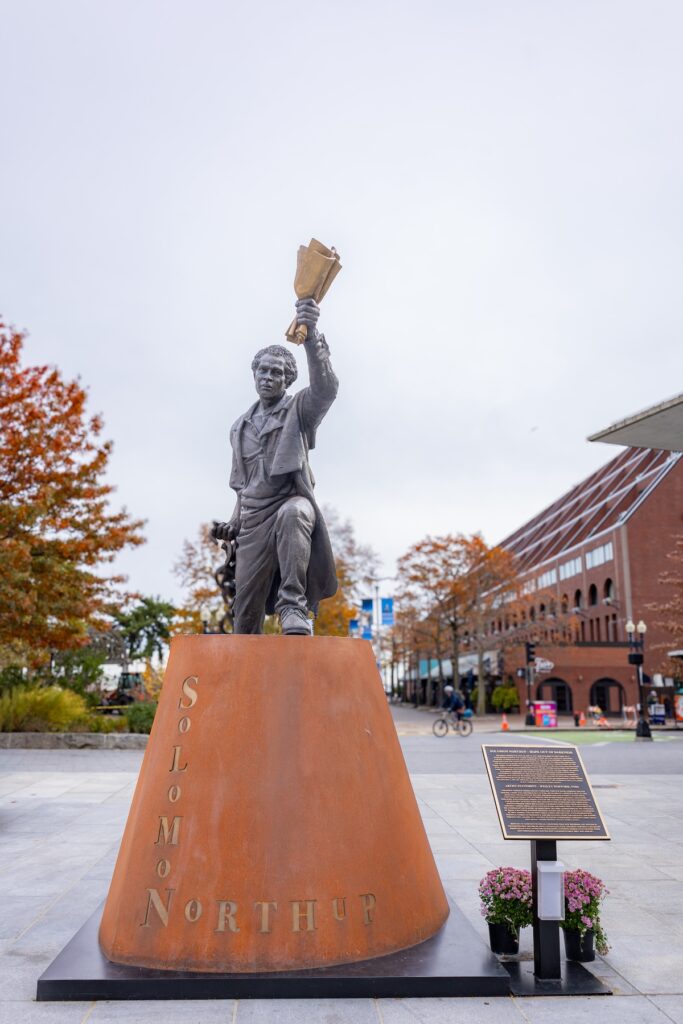
Solomon Northup, born free in New York in 1807, was kidnapped and enslaved for twelve years before regaining his freedom in 1853. His autobiography, Twelve Years a Slave, remains a foundational American narrative of resilience and truth-telling, chronicling one of the most powerful firsthand accounts of slavery in U.S. history. Hope Out of Darkness portrays Northup in a moment of emergence—rising from shadow into light—a visual embodiment of survival, truth, and liberation. The sculpture stands as both a work of contemporary art and a vessel of historical remembrance, connecting Northup’s 19th-century struggle for freedom to ongoing conversations about justice and equality in America.
Hope Out of Darkness was created by Wesley Wofford, FNSS, of North Carolina and commissioned by the Solomon Northup Committee for Commemorative Works. Presented in partnership with the North American Indian Center of Boston (NAICOB) and the Greenway Conservancy, the exhibition brings this monumental bronze work to Boston’s waterfront, inviting residents and visitors to reflect on history, resilience, and the enduring pursuit of justice.
Following the publication of Twelve Years a Slave in 1853, Solomon Northup visited Boston and numerous cities throughout Massachusetts between 1854 and 1856, where he became a powerful voice in the antislavery movement. He delivered lectures across the Commonwealth and even appeared before the Massachusetts State Legislature in March of 1855, led by Senator Charles Sumner, where he stood alongside Anthony Burns, the formerly enslaved man whose case had electrified the nation, and Ida May (born Mary Mildred Botts), a young girl publicly displayed for her white-passing appearance as part of the abolitionist campaign to expose the brutality and hypocrisy of slavery. During this period, Northup also performed in his self-written stage production, The Free Slave, dramatizing his ordeal and freedom. These appearances placed Northup among a circle of reformers who shaped the moral conscience of 19th-century Massachusetts.
The sculpture has traveled on a five-city limited engagement tour across the United States, sharing Northup’s story through art and dialogue in communities connected to abolition, freedom, and remembrance. Following its Boston exhibition, Hope Out of Darkness will be permanently installed in Marksville, Louisiana—the city where Solomon Northup was freed in 1853. There, the sculpture will stand at the heart of a custom-designed plaza incorporating symbolic elements and artistic features that reflect Northup’s harrowing journey from enslavement to freedom. The plaza will be located before the Avoyelles Parish Courthouse, the historic site that marks his return to liberty.
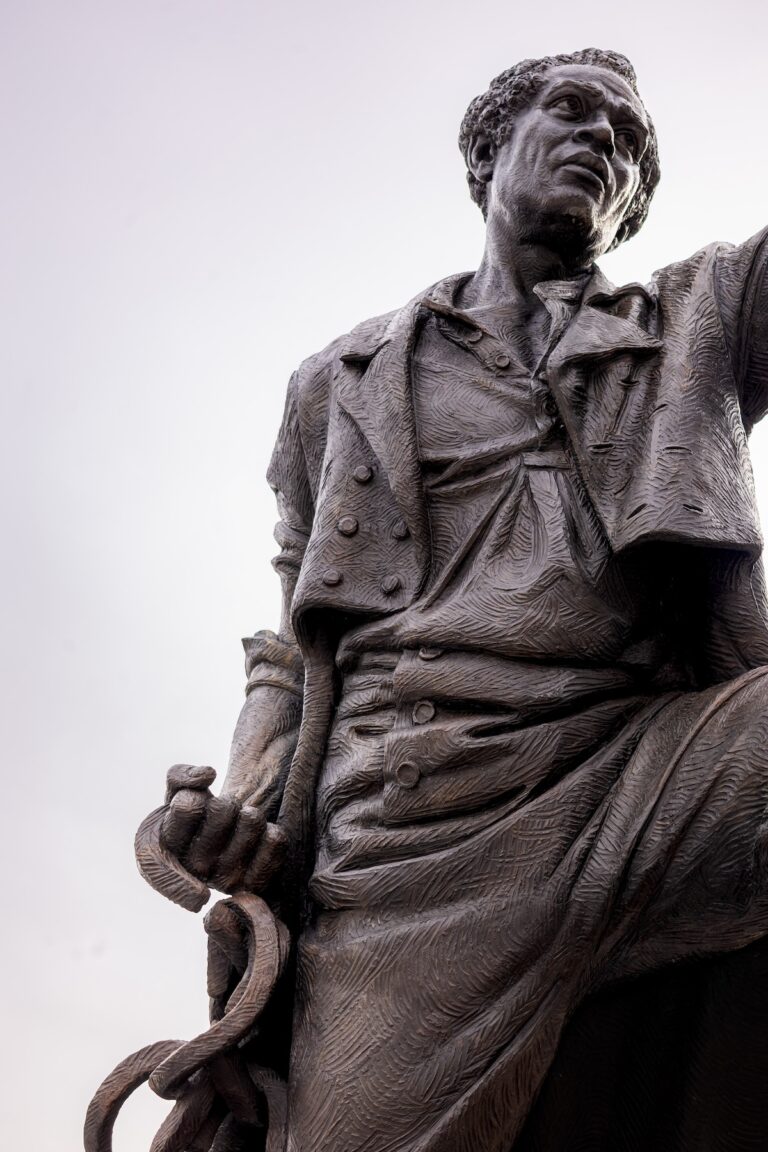
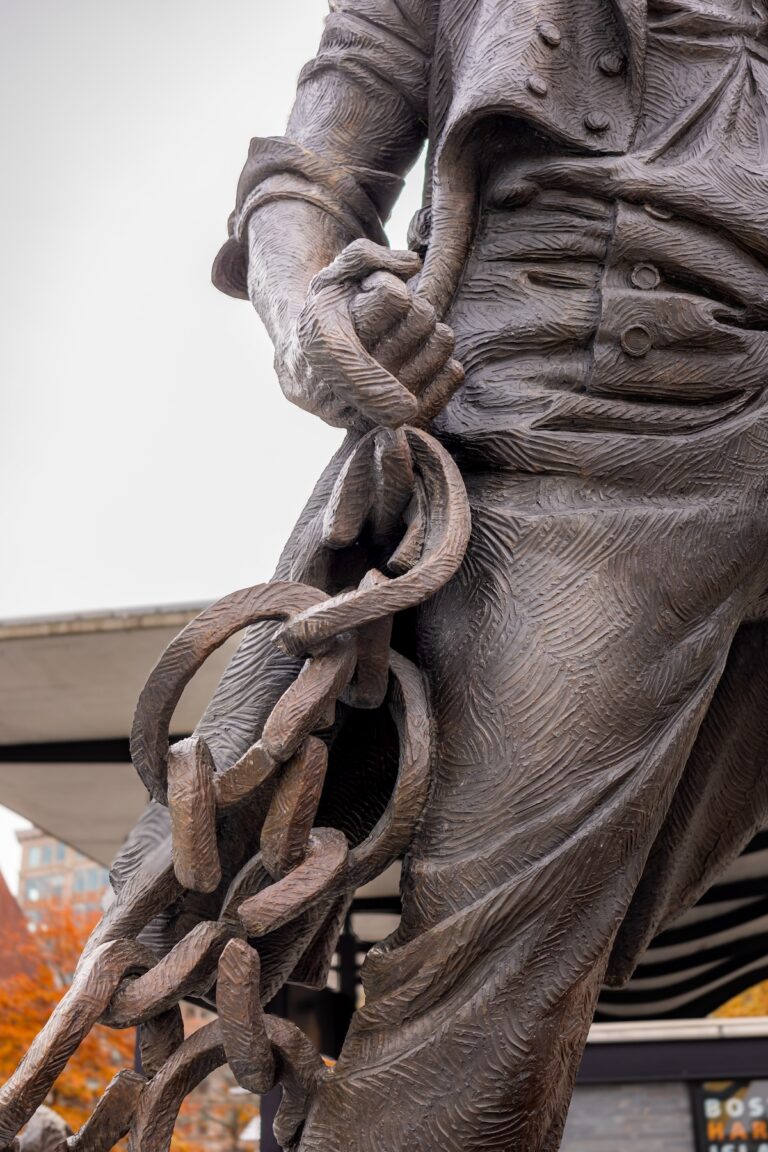
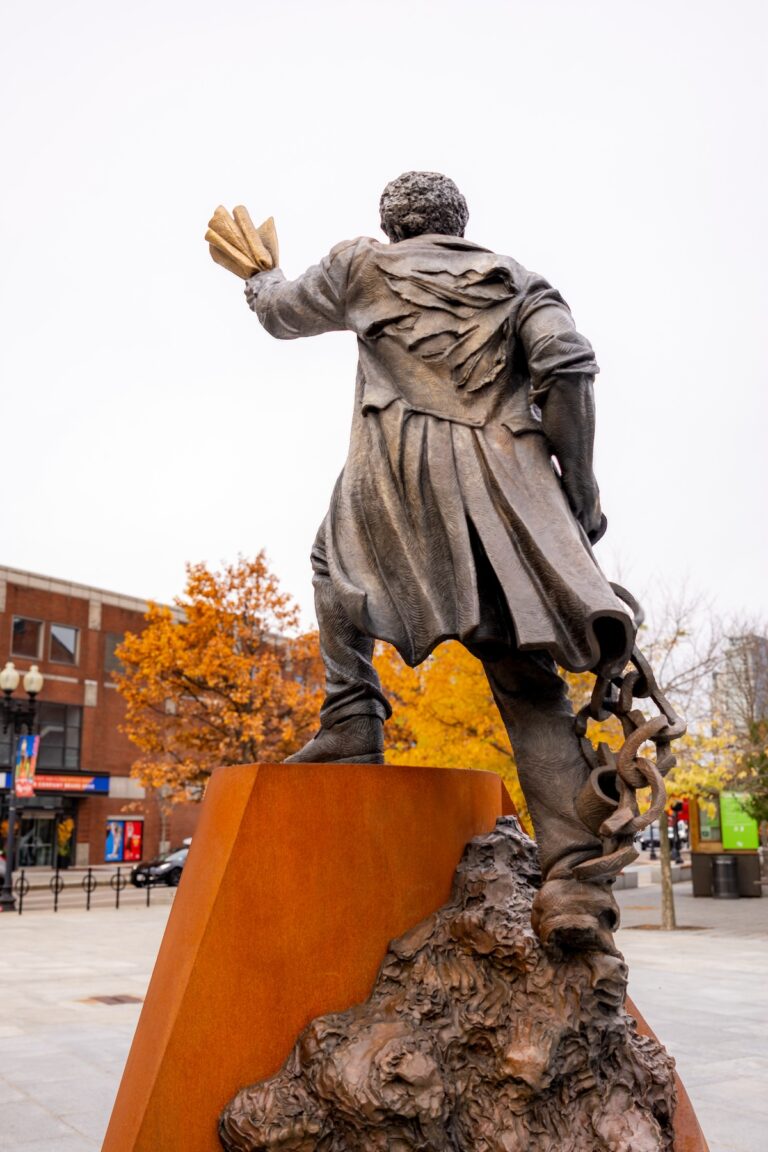
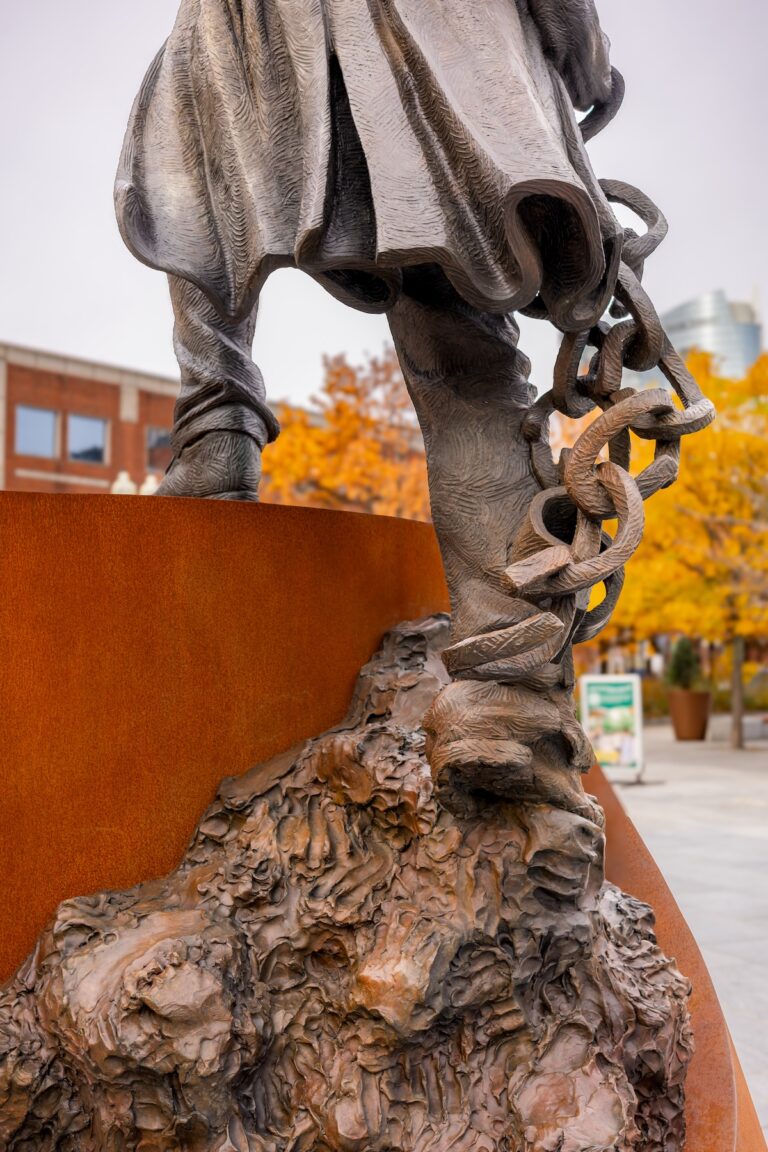
Location:
About the Artist
Wesley Wofford, FNSS, of North Carolina, is an Emmy and Oscar-winning artist with a background in film, widely recognized for his dynamic bronze sculptures that explore themes of history, resilience, and cultural memory. Combining classical sculptural techniques with cinematic storytelling, Wofford creates public monuments that engage audiences in meaningful dialogue. His notable works include Harriet Tubman, Journey to Freedom and Beacon of Hope. Commissioned to create Hope Out of Darkness, Wofford conducted extensive historical research and collaborated with scholars and community stakeholders to ensure the sculpture authentically represents Solomon Northup’s life, struggle, and triumph.
Further information about the sculpture Hope Out of Darkness and the commissioning initiative can be found on the Solomon Northup Committee for Commemorative Works website at www.snccw.com.
A Special Thank You to Our Supporters
About the Commissioning Agency
The Solomon Northup Committee for Commemorative Works of Louisiana is a nonprofit organization dedicated to preserving and sharing the legacy of Solomon Northup through public art, historical commemoration, and educational initiatives. The committee collaborates with historians, community leaders, and artists to develop installations that honor Northup’s story, engage communities, and create meaningful public spaces that encourage reflection and dialogue.
About North American Indian Center of Boston
NAICOB was originally established in 1969 as the Boston Indian Council when it served as the hub of social and civil rights activities for the American Indian/Alaska Native and First Nations urban Indian community in Boston. The Boston Indian Council was first headquartered in Dorchester and moved to Jamaica Plain in 1974. The center was reorganized as the North American Indian Center of Boston in 1991. Since then, we have provided a wide range of cultural, social, educational, and professional services to Native peoples in the Commonwealth. As the oldest urban Indian center in Massachusetts, our mission is to empower the Native American community with the goal of improving the quality of life of Indigenous peoples.
About The New Democracy Coalition
The New Democracy Coalition produces results that advocate for new laws that broaden democracy We produce local and national forums to educate citizens, especially youth, on the importance of civic engagement. We work with local and national organizations on voter protection issues and provide training and consultation on voter civic literacy projects. The New Democracy Coalition hosts community volunteer events, youth leadership training and policy advocacy, and recognizes local and national citizens for their efforts.
About The Greenway and the Conservancy
The Rose Kennedy Greenway is a contemporary public park in the heart of Boston and one of the most visited attractions in the Commonwealth, welcoming millions of visitors annually. The Greenway is managed by the Greenway Conservancy, a non-profit responsible for the administration and care of the park. The majority of the Conservancy’s annual budget is made up of generous donations from the community, and it is with their support that the Conservancy cultivates a gathering space where all are welcome and celebrated.
The Greenway Conservancy Public Art Program brings innovative and contemporary art to Boston through free, seasonal exhibitions that engage people in meaningful experiences, interactions, and dialogue with art, each other, and the most pressing issues of our time. Past Greenway exhibitions can be viewed on the Public Art Instagram (@greenwaypublicart) or the Conservancy’s website.
